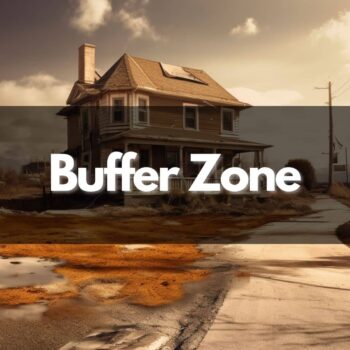The Equal Credit Opportunity Act protects borrowers applying for home loans from discriminatory lending practices.
This federal civil rights law is a crucial part of the real estate exam. It plays a significant role in promoting fair housing and fighting discrimination.
To understand the Equal Credit Opportunity act, you’ll need to learn from trusted real estate professionals. After spending years working in the housing industry, we’re here to provide you with the knowledge necessary to become a pro.
In this post, we’ll define the Equal Credit Opportunity Act, give examples of how it works, and discuss other vital fair lending laws.
What Is the Equal Credit Opportunity Act?
The Equal Credit Opportunity Act (ECOA) prohibits discrimination against borrowers applying for home loans. Per the ECOA, lending institutions cannot treat protected classes differently than anyone else.
Who Are the Protected Classes Under the ECOA?
The ECOA prohibits discrimination against the following protected characteristics:
- Race
- Color
- Religion
- National origin
- Sex (including gender identity and sexual orientation)
- Age
- Receipt of income from a public assistance program
- The applicant’s exercise of any right under the Credit Consumer Protection Act
What Is the Consumer Credit Protection Act?
The Consumer Credit Protection Act (CCPA) protects consumers from abusive lending practices. This act encompasses the Equal Credit Opportunity Act or Title VII.
What Housing Loans Does the ECOA Cover?
Under the Consumer Credit Protection Act, the ECOA covers:
- Mortgage loans
- Home improvement loans
- Home equity loans
The History Behind the Equal Credit Opportunity Act
Let’s talk about why the Equal Credit Opportunity Act was passed in the first place.
Women were regularly facing discrimination from mortgage lenders before the ECOA. These lenders often refused to consider a married woman’s income when giving out loans. They also denied credit loans to single women more often than other applicants.
The Equal Credit Opportunity Act was created to prohibit this type of discrimination based on sex and marital status. However, it wasn’t very long after that Congress amended the act to include the other protected classes listed above.
Examples of Equal Credit Opportunity Act Violations
Any lending practice that discriminates against protected classes violates the ECOA. Examples of discriminatory lending practices include:
- Inquiring about a borrower’s marital status
- Denying loans to borrowers because of their religion
- Charging higher interest rates to minorities
- Denying credit opportunities to qualified women
- Offering predatory loans to elderly persons
- Redlining minority communities
- Including hidden balloon payments in loans for non-English speakers
What Is Redlining?
Redlining is the practice of denying home loans to applicants in certain areas. This discriminatory practice generally happens in black communities to promote racially segregated neighborhoods.
What Is a Balloon Loan?
A balloon loan is a mortgage loan that does not fully amortize over the term. This type of loan gives borrowers low initial payments but requires them to pay a large lump sum at the end. If the balloon terms are hidden from the borrower until the last minute, this is considered predatory lending.
How Does the Equal Credit Opportunity Act Work in Real Estate?
The ECOA ensures that banks, mortgage companies, and credit unions do not take advantage of homebuyers. Let’s see an example of how the Equal Credit Opportunity Act operates in real-life applications.
Texas Department of Housing & Community Affairs v. Inclusive Communities Project, Inc.
In this court case, Inclusive Communities Project, Inc. (ICP) sued the Texas Department of Housing and Community Affairs. ICP alleged that the Department was using discriminatory practices when approving tax credits.
They claimed that the Department was approving credits based on race, which segregated neighborhoods and violated the Fair Housing Act. The Supreme Court sided with the ICP because the Department’s actions caused disproportionate harm to minority communities.
The Court extended this reasoning to apply to the mortgage industry, which is where the ECOA comes into play. For example, mortgage companies that give more loans to white communities than black communities violate fair lending laws.
Who Enforces the Equal Credit Opportunity Act?
The Consumer Financial Protection Bureau (CFPB), along with other federal agencies, enforces the Equal Credit Opportunity Act.
If borrowers feel a creditor has discriminated against them, they can file a complaint with the Department of Housing and Urban Development (HUD). Borrowers also have the option to file their own lawsuits.
The other federal agencies designed to support fair lending include:
- Comptroller of Currency (OCC)
- Federal Reserve Board (FRB)
- Federal Deposit Insurance Corporation (FDIC)
- National Credit Union Association (NCUA)
- Federal Trade Commission (FTC)
Penalties for Violating the ECOA
Lending institutions who violate the ECOA can be sued in court for:
- actual damages
- punitive damages of up to $10,000 for individual lawsuits
- $500,000 or 1% of their net worth for class-action lawsuits
What Does the ECOA Not Cover?
The Equal Credit Opportunity Act does not cover the following loan types:
- Subordinate loans
- Second liens
- Loans secured by land instead of dwellings
What Factors Can Lenders Consider?
The ECOA does not cover loan applicants who get denied credit for the following reasons:
- Poor credit history
- Insufficient income (and surplus income)
- Lack of collateral
- The loan amount is too high
- The applicant’s property is in poor condition
What Other Laws Protect the Credit Rights of Consumers?
The ECOA isn’t the only fair lending law that protects borrowers. Let’s look at some other regulations that keep mortgage companies in check.
Truth in Lending Act
The Truth in Lending (TILA) protects consumers from predatory lending practices. TILA, also known as Regulation Z, requires that creditors disclose loan terms on all credit transactions.
This act is significant in real estate because it protects homebuyers applying for a mortgage and home equity loans. Mortgage companies must disclose the following details when giving out home loans:
- Creditor’s identity
- Annual percentage rate (APR)
- Finance charging
- Amount of payments
- Monthly payment costs
- Late fees and other additional fees
Fair Credit Reporting Act
The Fair Credit Reporting Act (FCRA) is Title VI of the Consumer Credit Protection Act. This act ensures the privacy, accuracy, and fairness of consumer information.
The FCRA regulates who has access to consumers’ credit reports. This means that homebuyers applying for loans do not have to worry about their sensitive credit information falling into the wrong hands.
Fair Credit Billing Act
The Fair Credit Billing Act (FCBA) requires that creditors promptly handle consumer billing complaints. Under the FCBA, borrowers can dispute the following billing errors:
- Unauthorized charges
- Incorrect finance charges
- Finance charges with wrong dates
- Charges for services or items that were not delivered
- Questionable charges
The FCBA requires that lenders handle these disputes quickly and that the borrower’s credit history is unaffected.
Fair Debt Collection Practices Act
The Fair Debt Collection Practices Act (FDCPA) protects consumers against abusive debt collection practices. This act applies to attorneys and debt collectors involved in tenant evictions.
If a tenant is behind on rent and owes their landlord money, the FDCPA ensures their rights are protected. For example, debt collectors cannot harass or deceive tenants to collect their debt. This would break federal law and require action from the Federal Trade Commission (FTC).
Frequently Asked Questions about the ECOA
Let’s address some frequently asked questions that real estate agents and homebuyers have about the ECOA.
What Is the Fair Housing Act?
The Fair Housing Act, or Title VIII, is the other federal fair lending law. This act prohibits discrimination against protected classes in the sale and rental of housing.
The seven protected classes under the FHA include:
- Race
- Color
- National origin
- Religion
- Sex (including sexual orientation and gender identity)
- Familial status
- Disability
What Is Regulation B?
Regulation B prohibits creditors from collecting nonessential information about an applicant. For example, an applicant’s marital status has nothing to do with their ability to repay the loan. Regulation B makes it illegal for creditors to request or seek out this type of information.
What Is a Federal Credit Union?
Federal credit unions are member-owned organizations that give borrowers a safe place to take out loans. These institutions are regulated by the National Credit Union Association (NCUA).
Though similar to banks, credit unions have a few advantages. For example, federal credit unions offer loans with lower fees and better interest rates. The only downside is that credit unions generally offer fewer products and services.
What to Know Before the Real Estate Exam
The Equal Credit Opportunity Act protects homebuyers against discrimination from lending companies. This act asserts that mortgage companies must treat protected classes equally when giving out loans.
Because the ECOA is vital in promoting fair housing, it’s an important part of the real estate exam. Now that you’re familiar with how the ECOA works, we have no doubt you’ll crush this part of the test.
Of course, there’s still much to learn before the big day. Learn more key real estate terms using our online Real Estate Flashcards!











